When I connected with Sarah Bender, she was doing her last in a series of four 12-hour night shifts in Surrey. The 26-year-old is in her fifth year of service as an ambulance paramedic out of the South Fraser District, which includes Surrey, North Delta, White Rock and Langley. I asked her about the weight of such a serious and heavy job — especially during the pandemic.
“As a paramedic, I take on extraordinary responsibilities every day, and I know that my job carries a big risk,” she says. “But this pandemic has reminded us paramedics that we are human, too. [Like] the public, we are managing our own concerns and fears, which we put secondary to serving our patients.”
At the start of every shift, Bender must check that all supplies and equipment in the ambulance are ready for whatever arises. Within moments, the first call comes in: Bender and her assigned partner, Daniel Peacock, leave the station with lights and siren on.
Troy Clifford, president of the Ambulance Paramedics of British Columbia, CUPE Local 873, which represents over 4,500 paramedics and emergency dispatchers around the province, observes that paramedics and dispatchers have received fewer “normal” calls during the pandemic: fewer vehicles on the road means fewer accidents. And members of the public seem reluctant to go to a hospital unless absolutely necessary.

Bender and Peacock, though, stay busy throughout the night. On some calls they deal with folks concerned about whether they have COVID-19 and are wondering if they should go to the hospital; some of those calls involve the paramedics “gowning up” with protective equipment. Depending on the nature of the call, the ambulance may need to be disinfected afterward, which can take up to an hour. When they respond to a call involving police, they must be careful not to arrive before police have secured the scene. Later in the night, Bender and Peacock are summoned to a motor vehicle accident, where they work alongside police and firefighters to attend to the medical needs of a patient.
I’ve worked with paramedics for many years and am always impressed with their resilience, confidence and sense of purpose. My hope is that the images in this collection provide a sense of what these critical front-line workers must continue to confront on a daily basis during the pandemic.
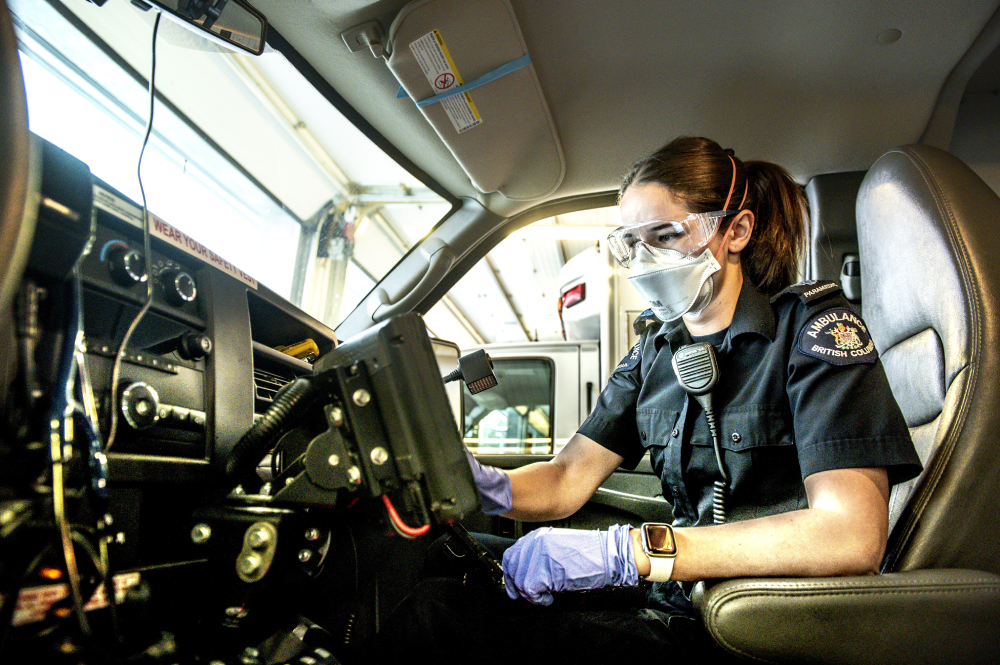
At the start of each shift, Sarah Bender puts on her personal protective equipment and wipes down all shared surfaces in the ambulance. COVID-19 has dramatically impacted the way paramedics keep themselves and the public safe and healthy.
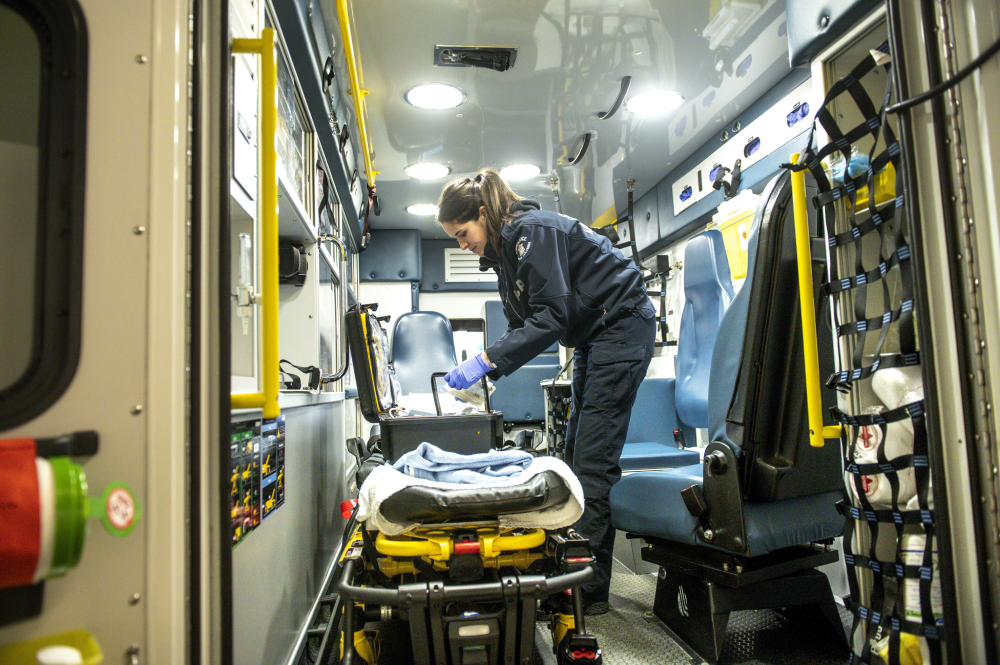
Careful pre-shift preparation of all essential equipment in the ambulance is key to being ready for any emergency. Here, Bender prepares her “kit,” the vital case of medical equipment that accompanies her on every call.
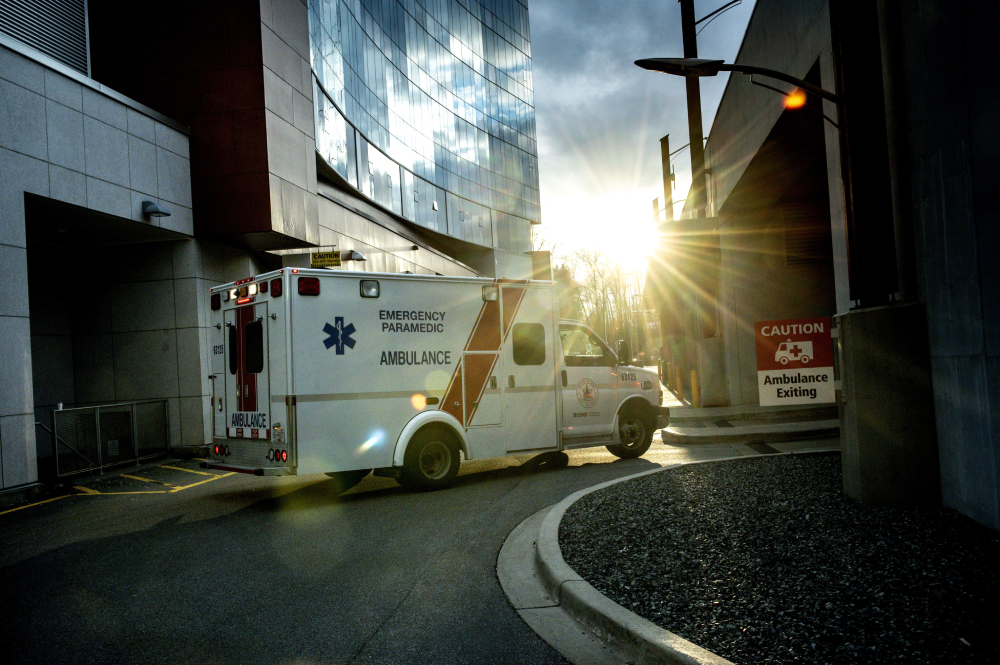
Bender and her partner, Daniel Peacock, drive off in the ambulance at the start of their night shift.
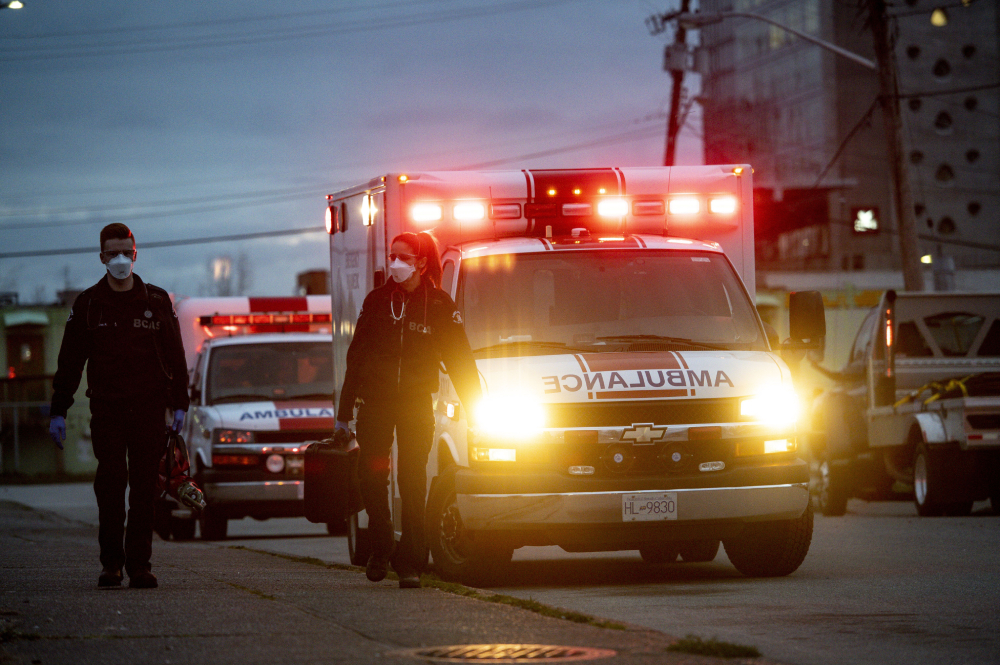
Bender and her partner arrive at the SafePoint Supervised Consumption Site — Surrey’s safe-injection facility — a common location for emergency response calls.
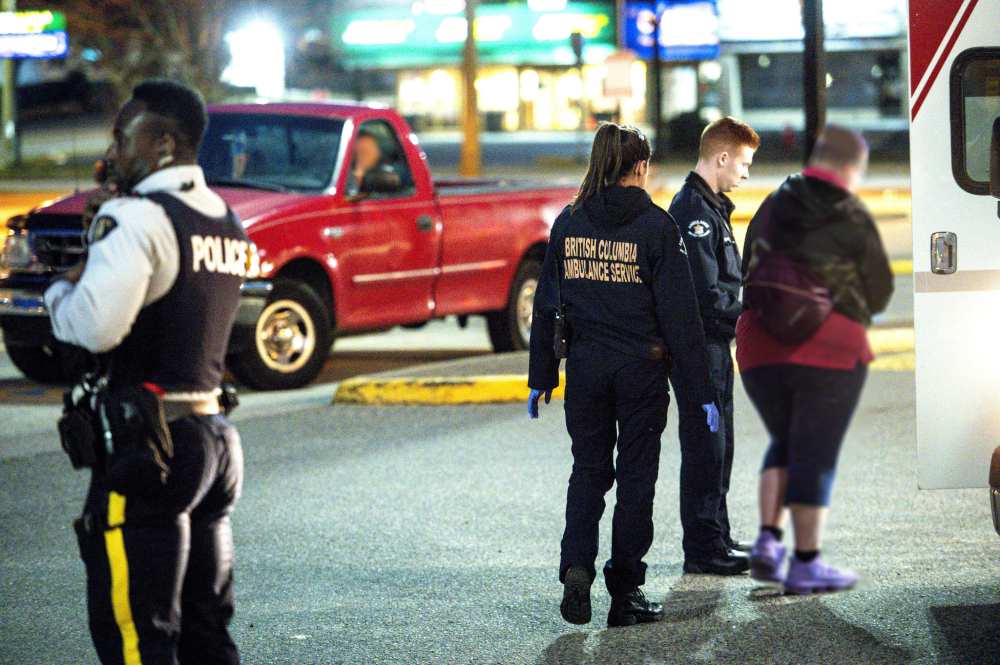
Bender and Peacock escort a patient into their ambulance at a scene they’ve attended with police.
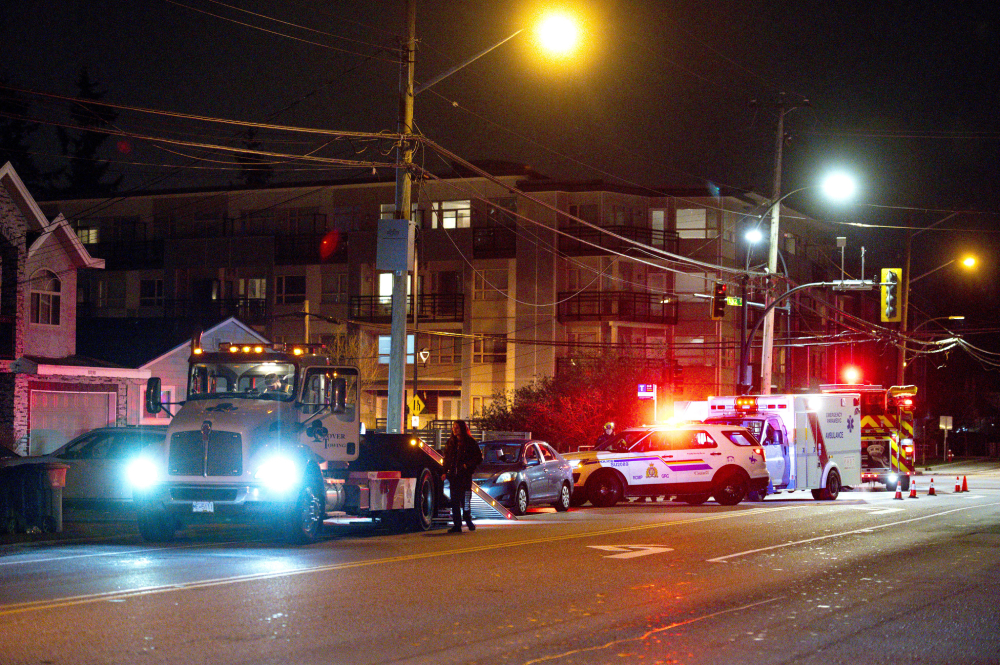
Ambulance paramedics are often called to work alongside police, firefighters, and other emergency responders.
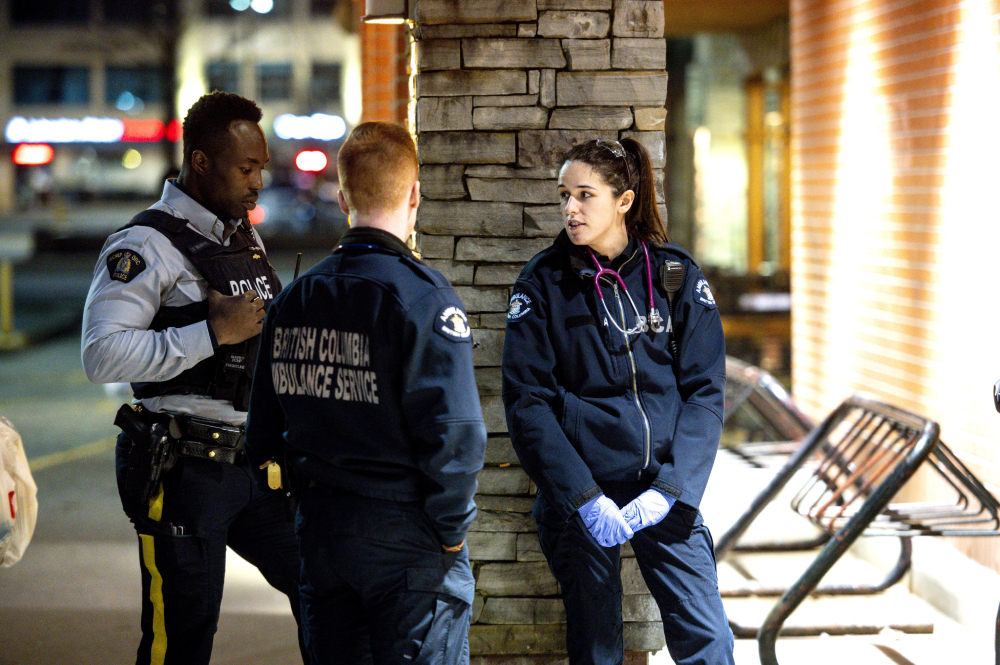
Bender and her partner confer with a member of the Surrey RCMP while attending a call.
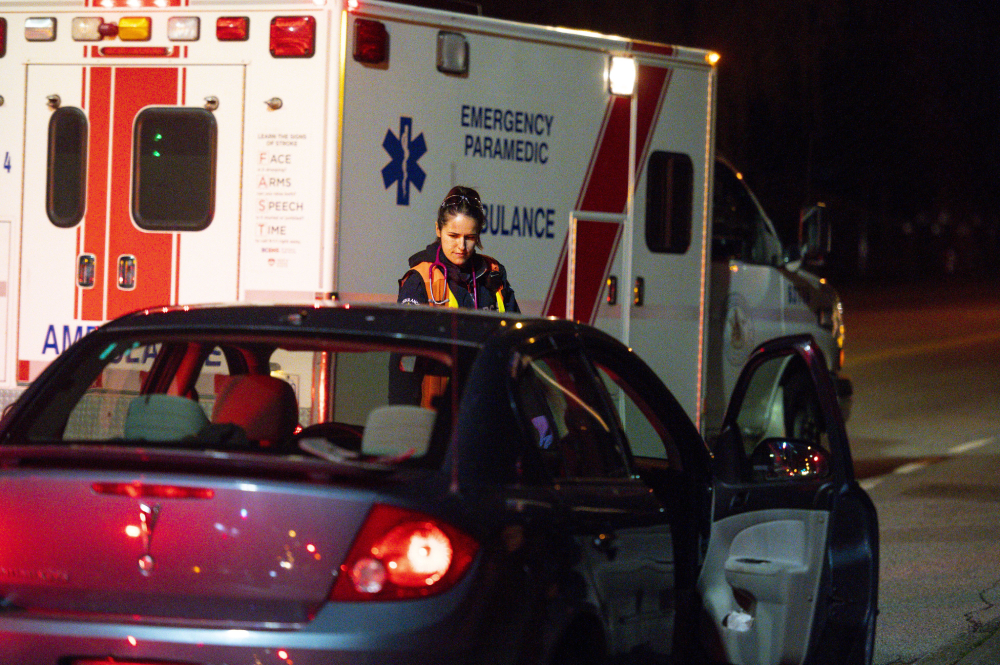
Bender arrives at the scene of a motor vehicle accident where she will assess medical needs, provide treatment, and if needed, provide transport to a hospital emergency department.
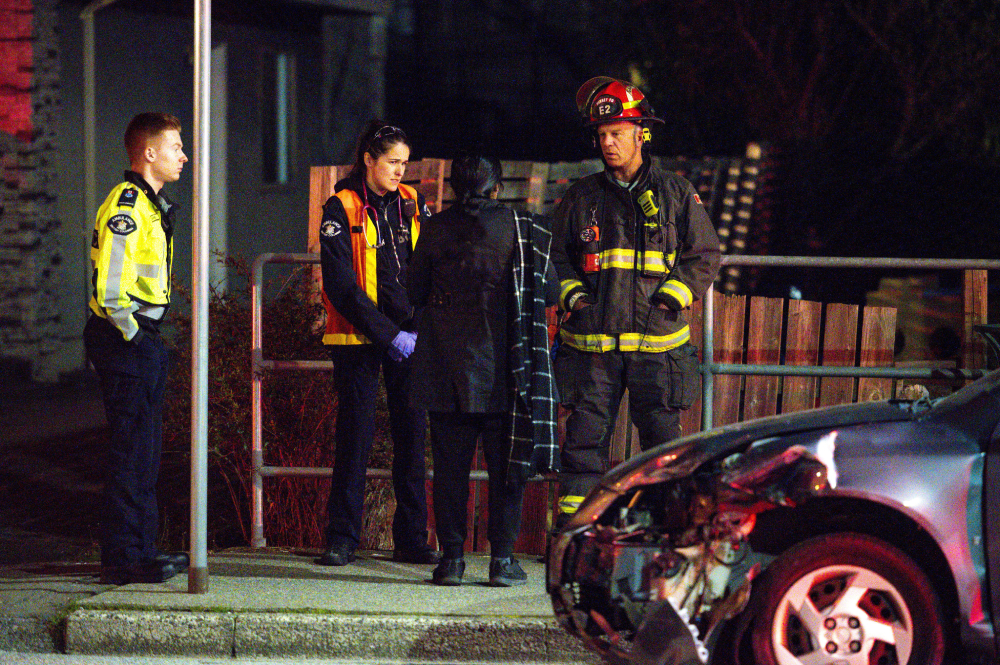
Bender speaks with a member of the public at the scene of a multi-vehicle accident. Her compassionate nature regularly proves an asset when dealing with people involved in emergency situations. ![]()
Read more: Health



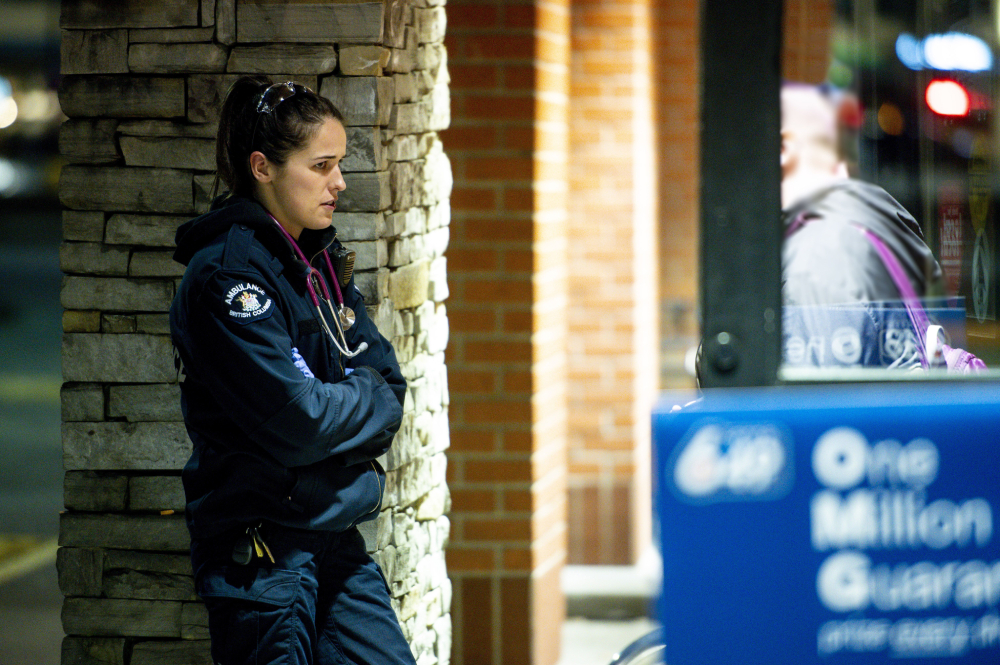












Tyee Commenting Guidelines
Comments that violate guidelines risk being deleted, and violations may result in a temporary or permanent user ban. Maintain the spirit of good conversation to stay in the discussion.
*Please note The Tyee is not a forum for spreading misinformation about COVID-19, denying its existence or minimizing its risk to public health.
Do:
Do not: